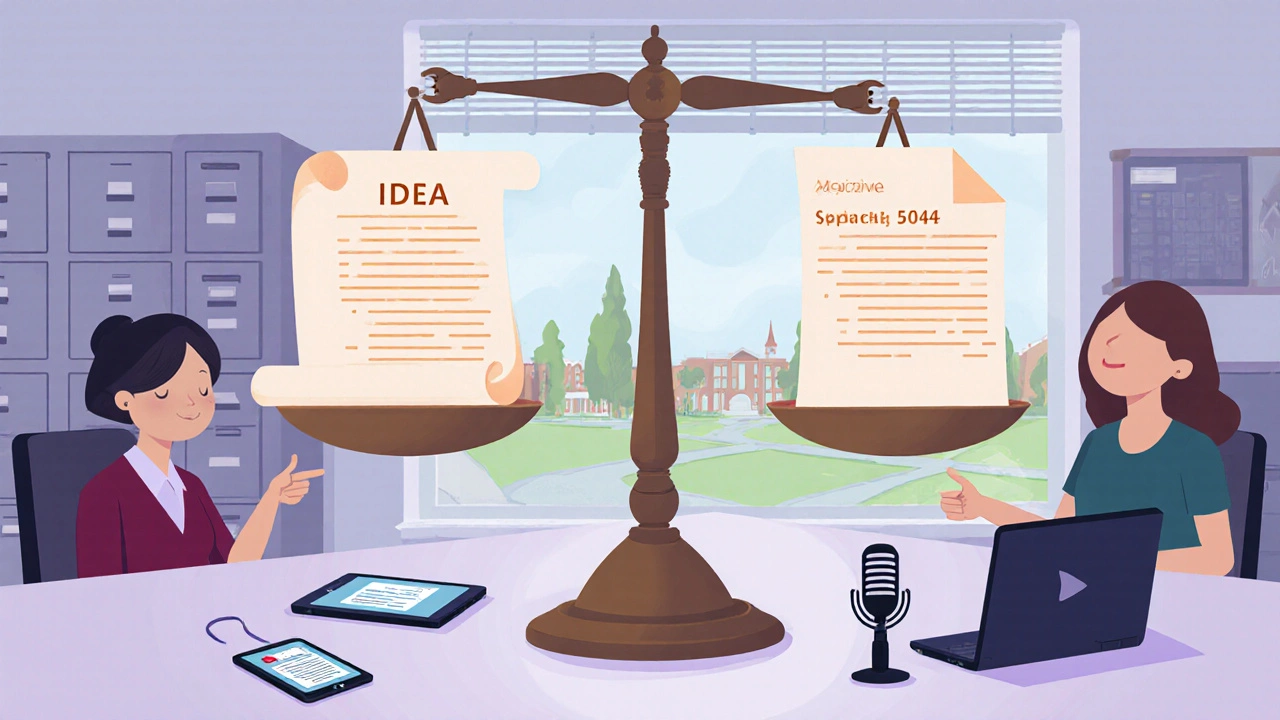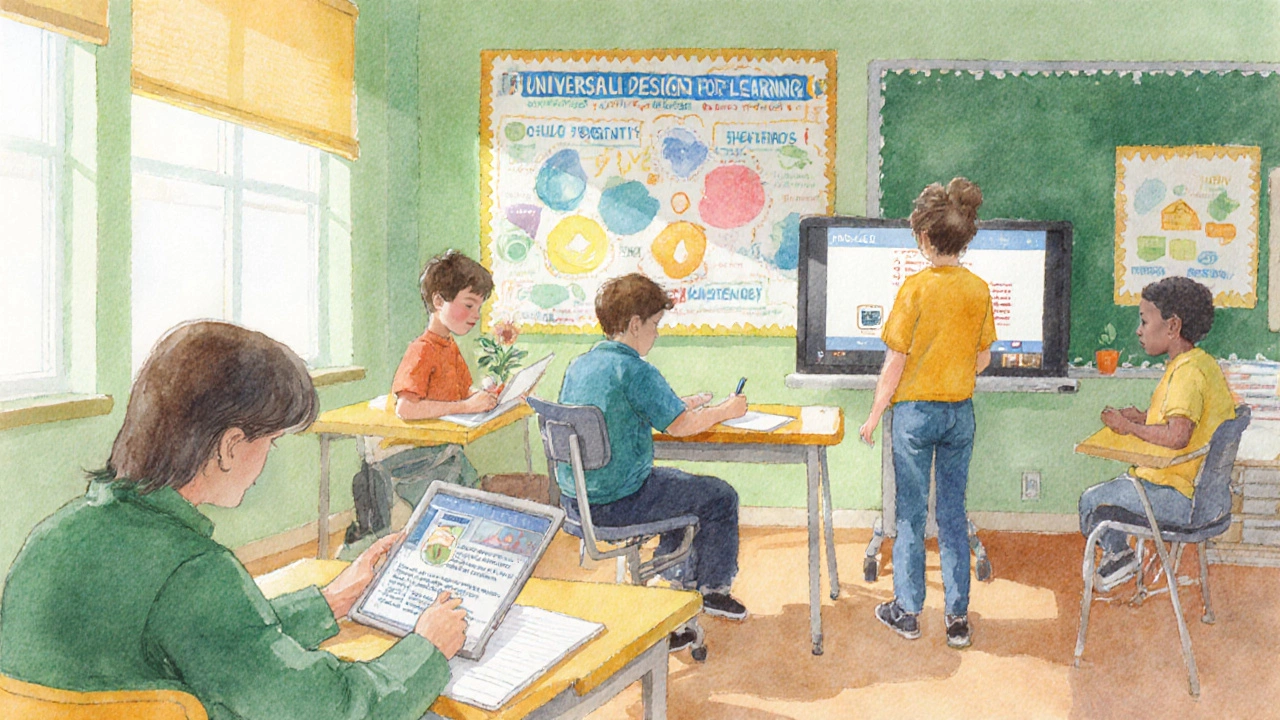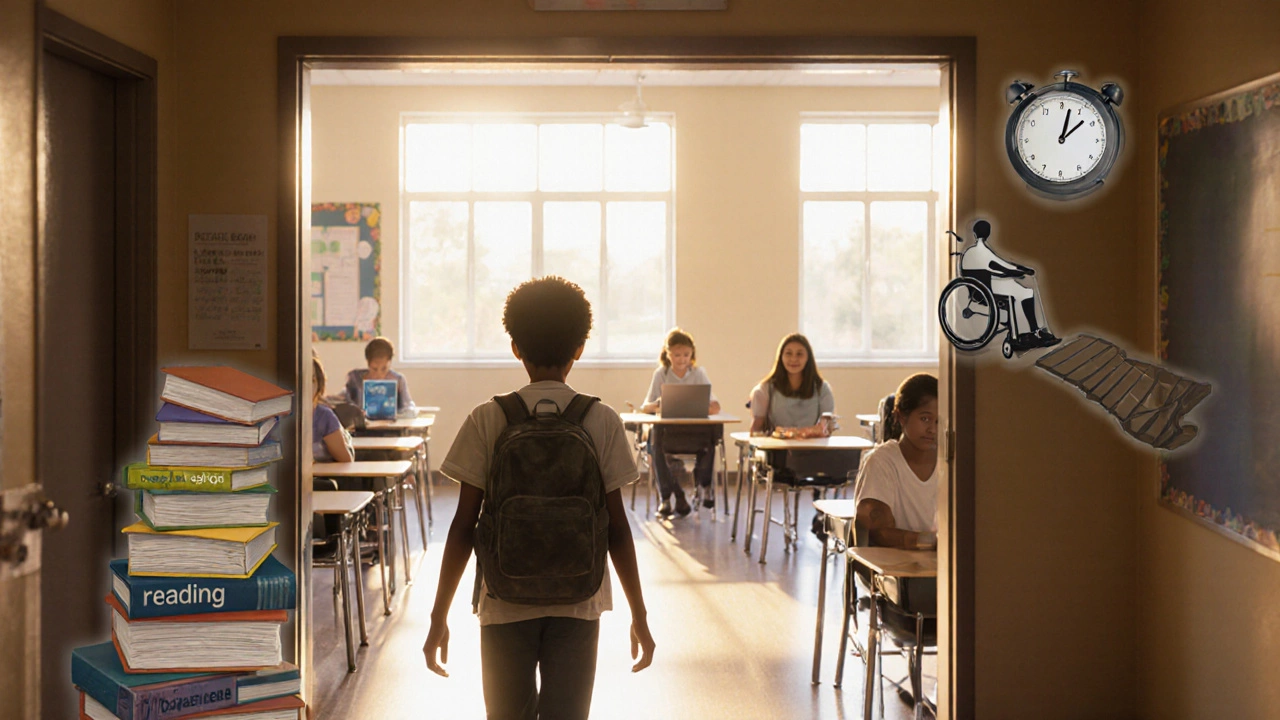Educational Accommodation Planner
Based on your selections, here are suggested accommodations that align with legal requirements and best practices:
- Select options to see recommendations
IDEA provides special education services for qualifying students.
Section 504 ensures equal access for students with disabilities in public schools.
ADA protects students in post-secondary settings.
When a student walks into a classroom with a hidden hurdle-whether it’s dyslexia, chronic pain, or anxiety-their ability to focus, absorb, and succeed can drop dramatically. Educational accommodations are adjustments or services that level the playing field, allowing those students to demonstrate their true capabilities. Understanding why these supports matter, what laws protect them, and how they work in practice helps educators, parents, and students alike create environments where learning thrives.
What Are Educational Accommodations?
In simple terms, an accommodation changes the way information is delivered, accessed, or assessed without altering the core curriculum. Think of it as a bridge that connects a student’s needs with the classroom’s expectations.
Disability is a broad term that covers physical, sensory, intellectual, and mental health conditions that can affect learning. A learning difference-such as ADHD or dyscalculia-is a specific subset that influences how a student processes information.
Accommodations can be as straightforward as extra time on a test, providing lecture notes beforehand, or as technology‑heavy as speech‑to‑text software. The key is that the change does not lower the academic standards; it merely offers a different route to reach them.
Legal Foundations That Require Accommodations
In many countries, laws explicitly guarantee the right to reasonable adjustments in education. In the United States, two primary statutes drive the landscape:
- Individuals with Disabilities Education Act (IDEA): mandates an Individualized Education Program (IEP) for students who qualify for special education services.
- Section 504 of the Rehabilitation Act: requires public schools to provide "reasonable accommodations" to any student with a disability, even if they don’t receive special education.
The Americans with Disabilities Act (ADA) extends these protections to post‑secondary institutions and private schools that receive federal funds. Together, these laws create a safety net that ensures students aren’t left to struggle in silence.
How Accommodations Boost Learning Outcomes
Research consistently shows that when students receive appropriate supports, their academic performance improves. A 2023 longitudinal study of 4,200 high‑schoolers found a 12% increase in graduation rates for those with documented accommodations compared to peers with similar disabilities but no formal supports.
Accommodations also enhance academic performance by reducing cognitive overload, allowing students to focus on content rather than coping mechanisms. For example, providing captioned videos helps students with hearing loss and also benefits visual learners, leading to deeper comprehension across the board.
Common Types of Accommodations for Different Needs
Below is a quick look at the most frequently requested adjustments, grouped by the type of challenge they address:
- Reading/Writing Difficulties: audiobooks, text‑to‑speech software, enlarged fonts, scribe services.
- Attention & Executive Function: extended time, reduced‑distraction testing environment, check‑list rubrics.
- Physical & Sensory Impairments: ergonomic seating, assistive listening devices, alternative input devices (e.g., switch access).
- Health‑Related Needs: flexible attendance policies, permission to take medication during class, rest breaks.
Each accommodation aligns with the principle of reasonable accommodation: it must be effective, not cause undue hardship to the institution, and maintain academic integrity.

Process of Requesting and Implementing Accommodations
Getting the right support involves a clear, collaborative workflow:
- Documentation: The student (or parent) provides medical or psychological reports that confirm the disability.
- Evaluation: School staff-often a special education coordinator-reviews the documentation and may conduct assessments.
- Plan Development: For K‑12, an IEP or Section 504 plan is drafted, outlining specific accommodations, responsible personnel, and review dates.
- Implementation: Teachers receive training and resources to apply adjustments consistently.
- Monitoring: Progress is tracked through grades, teacher observations, and student feedback; the plan is revised as needed.
Open communication is vital. When students feel comfortable voicing challenges, schools can fine‑tune supports before barriers become entrenched.
Challenges and Misconceptions
Even with legal mandates, several obstacles persist:
- Stigma: Some students worry that requesting accommodations signals "weakness," leading them to hide their needs.
- Inconsistent Application: Without standardized training, teachers may apply accommodations unevenly across subjects.
- Resource Limits: Small schools sometimes claim "undue hardship" to avoid providing technology or staffing.
A common myth is that accommodations give students an unfair advantage. In reality, they simply remove barriers, allowing the student’s true ability to shine-just like a wheelchair ramp lets someone walk the same hallway as anyone else.
Best Practices for Schools and Students
Here are evidence‑based steps that create a thriving accommodation culture:
- Adopt Universal Design for Learning (UDL): Design lessons from the start with multiple means of representation, expression, and engagement. When everyone benefits, the need for individual tweaks drops.
- Provide Ongoing Training: Teachers should receive annual workshops on new assistive tech and legal updates.
- Maintain Transparent Records: Use shared digital platforms so students, parents, and teachers can view accommodation status in real time.
- Encourage Self‑Advocacy: Teach students how to identify their barriers and request supports confidently.
- Regularly Review Plans: Schedule at least semi‑annual check‑ins to adjust accommodations as the student’s needs evolve.
When schools embed these practices, accommodations become a routine part of the learning ecosystem rather than a special‑case exception.
IDEA vs. Section504: A Quick Comparison
| Aspect | IDEA (IEP) | Section504 |
|---|---|---|
| Eligibility Basis | Requires a disability that impacts educational performance and needs specialized instruction. | Any disability that substantially limits a major life activity, including learning. |
| Document Type | Individualized Education Program (IEP) - detailed, legally binding. | 504 Plan - simpler, focuses on accommodations only. |
| Services Provided | Special education instruction, related services (speech therapy, OT, etc.). | Reasonable accommodations, no special instruction required. |
| Review Frequency | At least annually. | At least every three years, or when needed. |
| Legal Enforcement | IDEA-specific due process hearings. | Section 504 grievance procedures and ADA compliance. |
Conclusion: Why Accommodations Matter
At its core, an accommodation is a fairness tool. By removing hidden barriers, schools empower every learner to participate fully, achieve higher grades, and build confidence that lasts beyond the classroom. Whether mandated by law or embraced as a best‑practice philosophy, accommodations are not a luxury-they’re a necessity for an inclusive education system.

Frequently Asked Questions
What is the difference between an accommodation and a modification?
An accommodation changes how a student accesses the same material (e.g., extra time), while a modification alters the material itself or the learning expectations (e.g., simplifying an assignment).
Can a student lose accommodations once they improve?
Yes. Accommodations are reviewed regularly. If data shows the student no longer needs a specific support, the plan can be adjusted, but the decision must involve the student, parents, and professionals.
Do private schools have to follow IDEA?
Private schools that receive federal funds must comply with Section 504 and the ADA. Those that don’t receive such funding are not bound by IDEA, but many adopt similar practices voluntarily.
How can a student self‑advocate for accommodations in college?
Students should contact the campus disability services office, provide documentation, discuss specific needs, and request a written accommodation letter. Knowing their rights under the ADA helps them negotiate effectively.
What technology tools are most helpful for reading accommodations?
Screen readers (e.g., JAWS, VoiceOver), text‑to‑speech extensions (Read&Write), and e‑book platforms with adjustable fonts and backgrounds are widely used.
